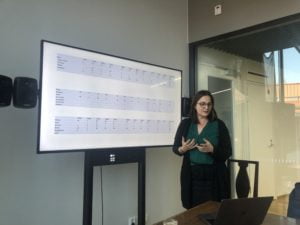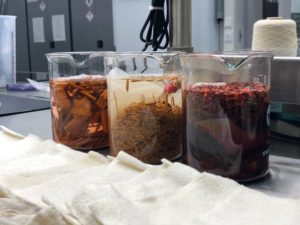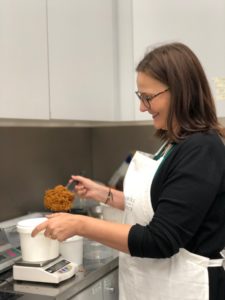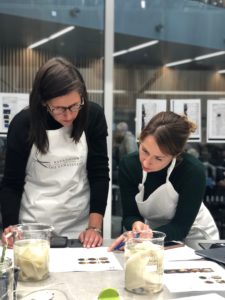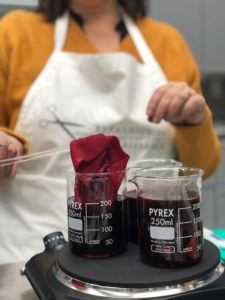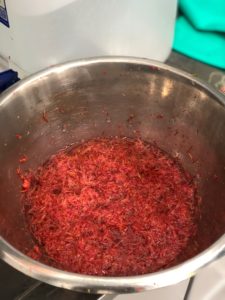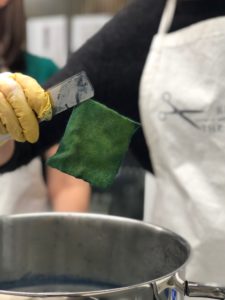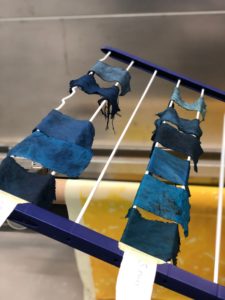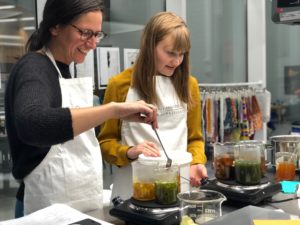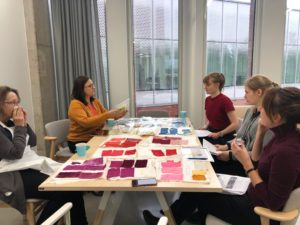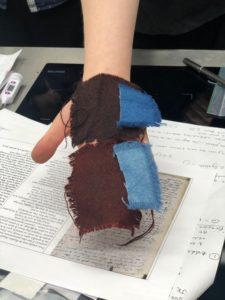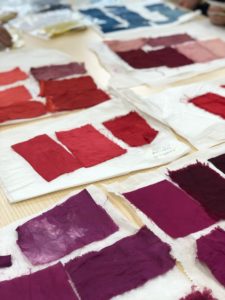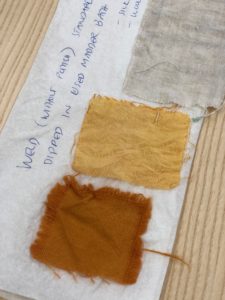Making Invisible Colours Visible
Date: 19–21 September 2019
Location: Aalto University
Organised by: Paula Hohti Erichsen
Expert makers: Jo Kirby Atkinson and Natalia Ortega-Saez
Methodological aims: To create new methodologies in cultural studies of early modern dress
- How can we visualize and understand colour in inventories?
- What sources do we need to put together in order to reconstruct colour?
- What methods do we need develop to make these colours visible?
- Is it possible to reconstruct colour based on documentary evidence, and can this be developed as a systematic and rigorous methodology in cultural studies of dress?
During this workshop, we carried out various dye tests, using both standardised historical recipes as well as specific historical recipes, and discussed both decisions and compromises that were made, as well as the methodological challenges and benefits that we identified in connection with our experimentation. We also thought about the differences in working in a modern labs vs. in a historical dye workshop or historically reconstructed setting.
Although we recognised the possibility of getting many things wrong, these experiments were instructive on many levels. These allowed us to evaluate and investigate the colours that we have found in data and visual images, and to gain new understandings of ordinary European’s relationship and access to and understanding of fashion. In particular, we aimed at:
- Understanding reds, greens, blues, yellows and blacks from our data, 1550–1650
- Engaging with the visual and tactile knowledge about colours, shades and tones
- Exploring and understanding novelties in colour
- Testing the ability of the colours to resist sunlight, water and wear
- Learning about the colouring matters, colour components and historical techniques of dying, and how the components and processes varied depending on the type and quality of fabric or colouring matter
- Understanding the economics of dyeing and the value of colour, and its relation to artisans’ colour world


